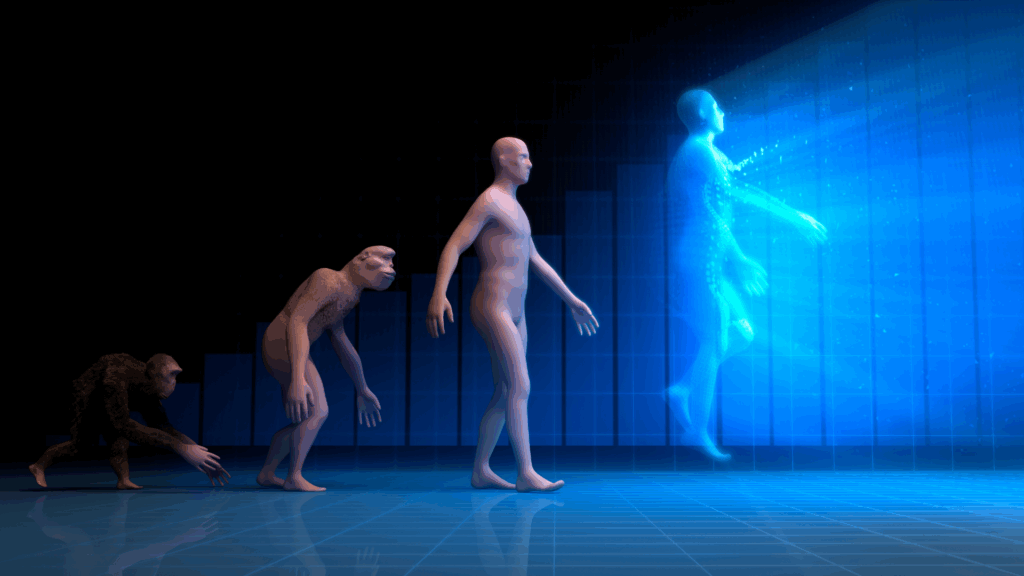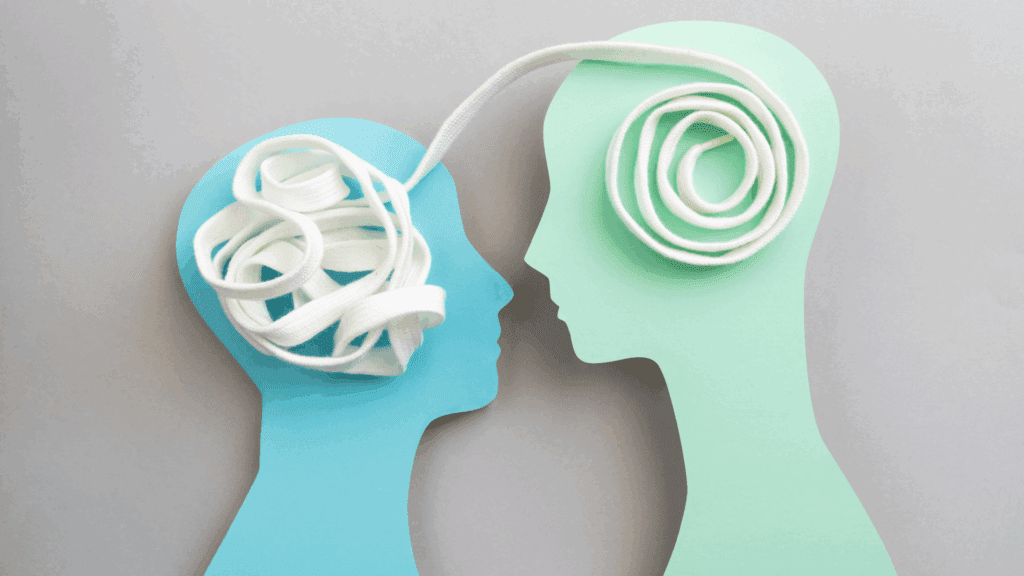Insecurity is a universal human experience, especially in the context of relationships. Whether it’s fear of rejection, self-doubt, or anxiety about not being “enough,” the neuroscience of insecurity reveals that these feelings are not simply personal flaws—they are deeply embedded in our brain’s wiring and evolutionary history. Understanding the neuroscience of insecurity can empower us to break free from self-limiting patterns and cultivate healthier, more fulfilling connections.
Take the case of Daniel, a client who came to me struggling to form lasting romantic relationships. Despite his success at work and a wide social circle, Daniel described relationships as “potentially dangerous and painful.” He found himself withdrawing emotionally whenever a partner got too close, convinced that intimacy would lead to hurt or disappointment. This pattern wasn’t unique to his romantic life—he often felt uneasy in friendships, too, and described a persistent sense of not quite belonging.
As we explored Daniel’s story, it became clear that his insecurity was more than just a passing feeling. Like many people with an avoidant attachment style, Daniel’s early experiences shaped his adult brain. His parents, both carrying their childhood traumas, were emotionally inconsistent—sometimes loving, sometimes distant. Neuroscience reveals that such early relational unpredictability can program the developing brain to be hyper-vigilant for threats and rejection, making emotional closeness feel risky even decades later.
Daniel’s struggles are far from rare. Research shows that insecure attachment styles—whether anxious, avoidant, or disorganized—can leave adults constantly seeking reassurance, fearing abandonment, or feeling unworthy of love. These patterns are not just psychological; they are reflected in the brain’s very circuits. For example, the amygdala, our emotional alarm system, becomes more reactive to perceived social threats. At the same time, the prefrontal cortex, which helps us regulate emotions and make sense of our experiences, can be hijacked by worry and rumination.

Insecurity doesn’t always look like withdrawal. For some, like Sarah, another client, it shows up as constant questioning and a need for validation. After being betrayed in a previous relationship, Sarah found herself checking her partner’s phone, asking where he was, and fearing he would leave her. Her need for reassurance was exhausting for both of them, and eventually, the relationship ended under the weight of mistrust and anxiety. This cycle, where insecurity drives controlling or clingy behaviors, which then push partners away, can become self-fulfilling, reinforcing the very fears that started it.
The neuroscience of insecurity helps us understand why these patterns are so complex to break. Our brains are wired to protect us from pain, but sometimes the strategies we use—like distancing ourselves, seeking constant reassurance, or trying to control our environment—end up keeping us stuck. Evolutionarily, these behaviors once helped us survive in unpredictable social groups, but in today’s world, they can sabotage our closest connections.
Yet, there is hope. The same brain that learns insecurity can also unlearn it. Through neuroplasticity, self-awareness, and science-backed strategies, it’s possible to rewire our minds for greater security, trust, and intimacy. In this blog, we’ll dive deep into the neuroscience of insecurity in relationships, explore why it feels so powerful, and discover practical ways to build confidence and connection, one step at a time.
What Is Insecurity and Why Do We Feel It?
Insecurity is a persistent sense of uncertainty or anxiety about oneself. In relationships, it often manifests as a fear of abandonment, jealousy, or a constant need for reassurance. But where does insecurity come from, and why is it such a universal experience?
At its core, insecurity is more than just a fleeting feeling—it’s a profound, deep-seated emotional state that can profoundly shape how we perceive ourselves and how we interact with others. It’s the quiet voice that questions if we’re truly lovable, worthy, or good enough. Neuroscience tells us that insecurity is not just a personality flaw; it’s a product of both our brain’s wiring and our life experiences.
From a young age, our brains are shaped by the feedback we receive from caregivers, teachers, and peers. If we grow up with criticism, neglect, or inconsistent affection, our developing brains can become hyper-sensitive to signs of rejection or failure. This early programming often lingers into adulthood, making us more likely to doubt ourselves or seek constant validation from others.
But insecurity isn’t just rooted in childhood. The modern world gives us endless opportunities to compare ourselves to others—on social media, at work, or even within our closest relationships. Seeing others’ successes and curated lives can make our achievements feel small, fueling self-doubt and envy. The neuroscience of insecurity shows that our brains are wired to notice social threats, and in today’s hyper-connected society, those threats can feel ever-present.
Relationship insecurity can also be shaped by past heartbreak, betrayal, or unresolved trauma. If you’ve been hurt before, your brain remembers that pain and tries to protect you from experiencing it again. This can lead to behaviors such as overthinking, withdrawing, or requiring frequent reassurance from your partner.
Importantly, insecurity is not a fixed trait. It’s a state of feeling that everyone experiences at times, often triggered by specific situations or relationships. Recognizing this can help us approach our insecurities with more compassion and less self-judgment.
Ultimately, insecurity is common because it’s part of our brain’s survival toolkit. Our ancestors needed to be attuned to social acceptance and group belonging to survive. Today, those same brain circuits can make us overly sensitive to rejection or criticism, even when our safety isn’t truly at risk. Understanding the neuroscience of insecurity helps us see these feelings for what they are—natural, understandable, and, most importantly, changeable.

Evolutionary Roots of Insecurity
The neuroscience of insecurity shows that these feelings have ancient origins. For our ancestors, belonging to a group was essential for survival. Social rejection could mean isolation, which in the wild was life-threatening. As a result, our brains evolved to be highly sensitive to social cues and potential threats to our status or acceptance. This sensitivity, while protective in the past, can now trigger insecurity in modern relationships, even when the stakes are emotional rather than physical.
Early Life Experiences and Attachment
Research in the neuroscience of insecurity suggests that early life experiences have a profound impact on the development of insecurity. Children who grow up with inconsistent, critical, or emotionally unavailable caregivers may develop insecure attachment styles. These early patterns shape the brain’s wiring, making some people more prone to anxiety, self-doubt, and the need for external validation in adult relationships.
Attachment theory, supported by neuroscience, explains how a secure attachment style leads to increased resilience and confidence. In contrast, insecure attachment (characterized by anxiety or avoidance) can set the stage for lifelong struggles with trust and self-worth. The brain’s plasticity means these patterns can be changed, but awareness is the first step.
The Brain Circuits of Insecurity
The neuroscience of insecurity identifies several key brain regions involved in the experience of self-doubt and anxiety:
The Amygdala: The Brain’s Alarm System
The amygdala is the brain’s emotional alarm center. It scans for threats, including social rejection or criticism, and triggers a cascade of stress responses. Insecure individuals often have a hyperactive amygdala, making them more sensitive to perceived slights or negative feedback in relationships.
The Prefrontal Cortex: Rational Thought vs. Emotional Reactivity
The prefrontal cortex is responsible for reasoning, self-control, and emotional regulation. In moments of insecurity, this area can struggle to override the amygdala’s powerful emotional signals, leading to overreactions, rumination, or impulsive behaviors, such as seeking constant reassurance.
The Default Mode Network: The Loop of Self-Doubt
The default mode network (DMN) is a set of brain regions active during self-reflection and mind-wandering. When insecurity takes hold, the DMN can become overactive, fueling rumination, overthinking, and negative self-talk. This loop can make doubts and fears feel inescapable, even when there’s no real threat.
The Insula and Social Pain
Neuroscience reveals that the insula and cingulate cortex process both physical pain and social pain, including rejection and exclusion. This overlap explains why insecurity in relationships can feel so intensely uncomfortable—our brains process social wounds as if they were physical injuries.

The Neuroscience of Insecurity in Everyday Relationships
Overthinking and Rumination
One hallmark of the neuroscience of insecurity is the tendency to overthink. The brain, trying to protect you from harm, replays conversations, analyzes your partner’s words, and anticipates adverse outcomes. While this is meant to prepare you for danger, it often leads to anxiety and decision paralysis.
Imposter Syndrome and Self-Doubt
Imposter syndrome is a classic example of insecurity in action. Even when you achieve success or receive love, your brain may misinterpret these signals, fueling fears of being “found out” or not deserving. The neuroscience of insecurity reveals that these feelings are rooted in the brain’s threat detection systems and can be altered through intentional practice.
Avoidance and Withdrawal
Insecurity can also lead to avoidance behaviors, such as dodging difficult conversations, procrastinating on important decisions, or withdrawing emotionally. While this offers short-term relief, it often deepens the sense of disconnection and reinforces the cycle of insecurity.
Seeking Reassurance
Constantly seeking reassurance from a partner or friends is a typical response to insecurity. Each time you get validation, your brain releases dopamine, providing a temporary sense of relief. However, this relief is short-lived, and the brain quickly craves more reassurance, creating a self-reinforcing loop that can strain relationships.

The Evolutionary Purpose of Insecurity
While insecurity often feels uncomfortable—even painful—the neuroscience of insecurity suggests it serves a deeper, adaptive purpose. Our brains did not evolve to make us miserable; rather, insecurity is a built-in safety feature, a mental alarm system finely tuned by evolution to keep us alert to social threats and potential dangers.
From an evolutionary perspective, insecurity was essential for survival. In ancient times, being part of a group was critical. Those who were sensitive to social cues—who worried about fitting in, being accepted, or avoiding conflict—were more likely to stay connected to the group and benefit from its protection and resources. The neuroscience of human social interactions reveals how our brains are wired to read social cues, form connections, and respond to acceptance or rejection in powerful ways.
The fear of rejection, or even mild self-doubt, motivated our ancestors to cooperate, seek feedback, and avoid behaviors that could lead to exclusion or harm. In this way, insecurity helped maintain social harmony and group cohesion, which were vital for survival in a dangerous world.
Modern neuroscience reveals that this ancient wiring remains active in the brains of humans today. The amygdala, our emotional alarm center, is quick to react to perceived threats of social rejection or criticism. The prefrontal cortex, which helps us plan and regulate emotions, works diligently to interpret social cues and anticipate potential outcomes. This interplay can spark self-doubt, prompting us to reflect on our actions and adjust our behavior to maintain relationships.
Interestingly, recent research suggests that insecurity isn’t just about individual survival—it may also benefit the group. Studies have found that groups containing a mix of secure and insecure individuals respond more effectively to threats. For example, people with anxious attachment tendencies tend to detect danger quickly and alert others, while those with avoidant tendencies are skilled at independent problem-solving and self-preservation. This diversity of responses can make groups more resilient and adaptable in the face of challenges.
Yet, insecurity is a double-edged sword. While a certain amount of self-doubt encourages caution, foresight, and personal growth, too much can become a barrier. Chronic insecurity can lead to overthinking, avoidance, and missed opportunities for connection and fulfillment. It can also fuel perfectionism, imposter syndrome, and a relentless drive to meet unrealistic standards—traits that may have once helped us survive but now often hold us back.
Consider the story of Lena, a client who was always the first to notice tension in her team at work. Her sensitivity to group dynamics made her a valuable collaborator, able to defuse conflicts before they escalated. But this same sensitivity also left her feeling anxious and responsible for everyone’s happiness, leading to burnout and self-doubt. Lena’s experience illustrates how the evolutionary roots of insecurity can be both a gift and a challenge in modern life.
The key is finding balance—using insecurity as a catalyst for self-improvement, empathy, and social cooperation, rather than letting it become a barrier to connection or a source of chronic stress. By understanding the neuroscience of insecurity, we can learn to appreciate its evolutionary wisdom while also developing the tools to manage it in healthy, constructive ways.
Insecurity, then, is not simply a flaw to be eliminated. It is a complex, adaptive response that has helped humans survive, thrive, and build communities for thousands of years. When we harness its positive aspects—such as openness to feedback and motivation to grow—while learning to manage its excesses, we unlock greater confidence, resilience, and deeper, more meaningful relationships.

How Insecurity Impacts Relationships
Communication Breakdowns
Insecure thoughts can distort your interpretation of your partner’s words or actions. You might read too much into a neutral comment or assume the worst when communication is unclear. The neuroscience of insecurity reveals that the brain’s negativity bias—its tendency to focus on potential threats—can increase the likelihood of misunderstandings.
Jealousy and Comparison
Social comparison is hardwired into the brain. When insecurity is high, you may find yourself constantly comparing your worth to others, which can lead to feelings of jealousy or resentment. Social media amplifies this effect, as curated images and stories make it easy to feel “less than” in comparison to others.
Emotional Reactivity
When the amygdala is on high alert, even minor disagreements can feel like major threats. This can lead to overreactions, emotional outbursts, or shutting down. The neuroscience of insecurity reveals that these responses are not signs of weakness but natural reactions to perceived danger.
Sabotaging Relationships
Sometimes, insecurity leads to self-sabotage—pushing people away, testing their loyalty, or doubting their affection. These behaviors are the brain’s misguided attempts to protect you from rejection, but they often create the very outcomes you fear.
The Science of Overcoming Insecurity
The good news is that the neuroscience of insecurity also offers hope. The brain is capable of change—a phenomenon known as neuroplasticity. With the right strategies, you can rewire your brain to build confidence, trust, and emotional resilience.
Mindfulness and Self-Awareness
Mindfulness practices train the brain to observe thoughts and feelings without judgment, allowing for a more balanced perspective. Studies show that mindfulness can reduce amygdala reactivity and strengthen the prefrontal cortex, making it easier to manage insecurity and respond thoughtfully in relationships.
Cognitive Restructuring
Cognitive-behavioral techniques help you identify and challenge irrational beliefs that fuel insecurity. For example, replacing “I’m not good enough” with “I have strengths and can learn from my mistakes” creates new neural pathways that support self-confidence.
Embracing Uncertainty
The neuroscience of insecurity teaches us that the brain craves certainty, but life is full of unknowns. Learning to tolerate uncertainty—by taking small risks, facing fears, and accepting imperfection—builds resilience and reduces the grip of insecurity.
Gratitude and Positive Focus
Practicing gratitude activates the brain’s reward systems and counteracts the negativity bias. Focusing on positive experiences, achievements, and supportive relationships helps shift the brain’s attention away from threats and toward growth.
Social Connection and Vulnerability
Sharing your insecurities with trusted friends or partners can reduce the brain’s perception of threat and enhance feelings of safety and belonging. Vulnerability fosters deeper connection and reminds you that insecurity is a shared human experience.
Self-Compassion
Being kind to yourself when insecurity arises is a powerful way to soothe the brain’s alarm system. Self-compassion practices have been shown to reduce stress, increase emotional regulation, and promote a healthier self-image.

The Role of Neuroplasticity in Healing Insecurity
Neuroplasticity is one of the most exciting discoveries in modern neuroscience. It means that your brain is not fixed or unchangeable. Instead, it has the amazing ability to reorganize itself by forming new neural connections throughout your life. This is especially important when it comes to healing insecurity.
Many people believe that the patterns of insecurity they learned in childhood or through difficult experiences are permanent. However, neuroplasticity reveals that this isn’t true. The brain can “rewire” itself, allowing you to break old habits of self-doubt and build new pathways for confidence and security.
Let me share the story of Emily, a client who struggled with deep feelings of insecurity in her relationships. Growing up, Emily rarely received praise or encouragement from her parents. As an adult, she constantly worried that her partner would lose interest or find someone better. She often found herself overthinking every conversation, searching for hidden signs of rejection, and needing constant reassurance.
When Emily first learned about neuroplasticity, she was both hopeful and skeptical. Could her brain really change after so many years of insecurity? Together, we worked on small, daily practices to help her build new mental habits. Emily started by noticing her negative self-talk and gently challenging it. Instead of thinking, “I’m not good enough,” she practiced saying, “I am worthy of love and respect.” She also tried new behaviors, like expressing her needs openly and celebrating small moments of connection with her partner.
At first, these changes felt awkward and unnatural. But over time, Emily noticed something incredible: her automatic reactions started to shift. She felt less anxious when her partner was busy, and she didn’t jump to negative conclusions as quickly. Each time she practiced a new thought or behavior, she was helping her brain form new, healthier connections.
This is the power of neuroplasticity. Every time you choose a new way to think, act, or respond to your emotions, you are teaching your brain a different pattern. The more you repeat these positive changes, the stronger those new pathways become. Eventually, what once felt difficult starts to feel natural.
Neuroplasticity doesn’t mean change happens overnight. It requires patience, practice, and sometimes support from others. But it does mean that insecurity is not your destiny. With awareness and effort, you can reshape your brain, heal old wounds, and build lasting confidence from the inside out.
If you’re struggling with insecurity, remember: your brain is always capable of growth and change. Each small step you take is a signal to your brain that you are ready for something better, and over time, those steps add up to a fundamental transformation.
Practical Steps to Rewire Your Brain
- Practice daily mindfulness or meditation to calm the amygdala and strengthen the prefrontal cortex.
- Challenge negative self-talk and replace it with balanced, realistic thoughts.
- Take small social risks to build tolerance for uncertainty and rejection.
- Keep a gratitude journal to focus your brain on positive experiences.
- Seek feedback and support from trusted people, but practice self-validation as well.
- Celebrate progress, no matter how small—each step reinforces new neural pathways.
When to Seek Professional Support
Sometimes, the neuroscience of insecurity reveals patterns that are deeply ingrained or linked to trauma, anxiety disorders, or depression. In such cases, insecurity can significantly impact your relationships, emotional well-being, and overall quality of life. Seeking support from a mental health professional or a neuroscience-based coach is crucial because they can offer personalized strategies tailored to your unique brain wiring and life experiences.
A personalized neuroscience-based approach is essential for effective healing because insecurity is not a one-size-fits-all issue. Each person’s brain has been shaped by different genetic factors, early life experiences, and environmental influences, which means the underlying causes and manifestations of insecurity vary widely. Professionals trained in neuroscience can assess your specific cognitive and emotional patterns, helping to identify the neural circuits involved in your insecurity.
With this understanding, they can design targeted interventions that leverage neuroplasticity—the brain’s ability to rewire itself—to build new, healthier pathways. This may include customized cognitive exercises, mindfulness practices, emotional regulation techniques, and lifestyle adjustments that cater to your brain’s specific needs.
Moreover, a neuroscience-based coach or therapist can provide ongoing support and real-time feedback, helping you navigate setbacks and celebrate progress. This personalized guidance increases the likelihood of lasting change, empowering you to develop greater self-confidence, emotional resilience, and secure relationships.
If insecurity is causing persistent distress or disrupting your life, don’t hesitate to seek professional help. The proper support, grounded in neuroscience, can transform your experience and open the door to meaningful growth and connection.
Final Thoughts: Embracing the Neuroscience of Insecurity
Insecurity is not a flaw—it is a natural part of being human, shaped by our brains, our history, and our need for connection. The neuroscience of insecurity reveals that self-doubt and fear are not signs of weakness, but rather signals from an ancient, protective system. By understanding and working with your brain, you can transform insecurity from a stumbling block into a stepping stone for growth, empathy, and deeper, more meaningful relationships.
The journey to confidence and a secure connection is an ongoing process. With compassion, self-awareness, and the insights of neuroscience, you can rewire your mind and build the fulfilling relationships you deserve.
#neuroscienceofinsecurity #relationships #brainhealth #emotionalintelligence #selfdoubt #confidence #attachment #mentalhealth #selfgrowth #neuroplasticity #psychology #wellbeing #personaldevelopment #mindset #socialbrain



